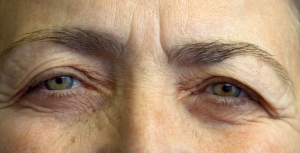Ocular Hypertension
What is Ocular Hypertension?
Ocular hypertension means the pressure in your eye, or your intraocular pressure (IOP), is higher than normal levels. Elevated IOP is also associated with glaucoma, which is a more serious condition that causes vision loss and optic nerve damage. By itself, however, ocular hypertension doesn’t damage your vision or eyes.
Studies suggest that 2% to 3% of the general population may have ocular hypertension.
Signs and symptoms of ocular hypertension
You can’t tell by yourself that you have ocular hypertension, because there are no outward signs or symptoms such as pain or redness. At each eye exam, your eyecare practitioner […]

 Technically, pink eye is the acute, contagious form of conjunctivitis – inflammation of the clear mucous membrane that lines the inner surface of the eyelids and overlies the white front surface of the eye, or sclera. Bacterial infection causes the contagious form of conjunctivitis.
Technically, pink eye is the acute, contagious form of conjunctivitis – inflammation of the clear mucous membrane that lines the inner surface of the eyelids and overlies the white front surface of the eye, or sclera. Bacterial infection causes the contagious form of conjunctivitis. Ptosis (pronounced “toe-sis”) refers to the drooping of an eyelid. It affects only the upper eyelid of one or both eyes. The droop may be barely noticeable, or the lid can descend over the entire pupil. Ptosis can occur in both children and adults, but happens most often due to aging.
Ptosis (pronounced “toe-sis”) refers to the drooping of an eyelid. It affects only the upper eyelid of one or both eyes. The droop may be barely noticeable, or the lid can descend over the entire pupil. Ptosis can occur in both children and adults, but happens most often due to aging. A stye (or hordeolum) develops when an eyelid gland at the base of an eyelash becomes infected. Resembling a pimple on the eyelid, a it can grow on the inside or outside of the lid. They are not harmful to vision, and they can occur at any age.
A stye (or hordeolum) develops when an eyelid gland at the base of an eyelash becomes infected. Resembling a pimple on the eyelid, a it can grow on the inside or outside of the lid. They are not harmful to vision, and they can occur at any age. Eyeglasses are more popular today than ever, despite the availability of contact lenses and vision correction surgery.
Eyeglasses are more popular today than ever, despite the availability of contact lenses and vision correction surgery.